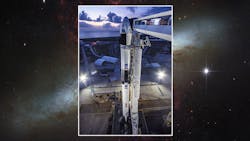As of this afternoon, space travel has evolved. NASA astronauts are still very much involved, but today, a commercial aircraft, the fully automated Crew Dragon space capsule from SpaceX, is transporting a human crew from Earth to the International Space Station (ISS) But when NASA astronauts Doug Hurley and Bob Behnken must guide the Crew Dragon vehicle, it will be via computer touch screen rather than the manual controls of past missions. NASA is teaming with commercial partners such as SpaceX and Boeing in hopes of helping humanity reach further into space.
Hurley and Behnken are veteran pilots but this is their first mission with touchscreen controls, heading for the ISS from NASA's Kennedy Space Center in Florida as part of NASA's Commercial Crew Program. The astronauts are wearing custom space suits designed by SpaceX, with gloves developed for touching the control screens, three-dimensional (3D) printed helmets, and a single umbilical connection for cooling and communications.
Hurley comments on the change from tradition: “Growing up as a pilot my whole career, having a certain way to control the vehicle, this is certainly different. You've got to be very deliberate when you're putting an input in with a touchscreen, relative to what you'd do with a stick. When you're flying an airplane, for example, if I push the stick forward it's going to go down. I have to actually make a concerted effort to do that with a touch screen.” Behnken is somewhat cautious about making the switch to a touchscreen controller: “The right answer for all flying is to not switch to a touchscreen necessarily, but for the task we have. It just might not be the same thing you'd want to use if you were suited up and trying to fly an entry or an ascent.”
About the Author
Jack Browne
Technical Contributor
Jack Browne, Technical Contributor, has worked in technical publishing for over 30 years. He managed the content and production of three technical journals while at the American Institute of Physics, including Medical Physics and the Journal of Vacuum Science & Technology. He has been a Publisher and Editor for Penton Media, started the firm’s Wireless Symposium & Exhibition trade show in 1993, and currently serves as Technical Contributor for that company's Microwaves & RF magazine. Browne, who holds a BS in Mathematics from City College of New York and BA degrees in English and Philosophy from Fordham University, is a member of the IEEE.
